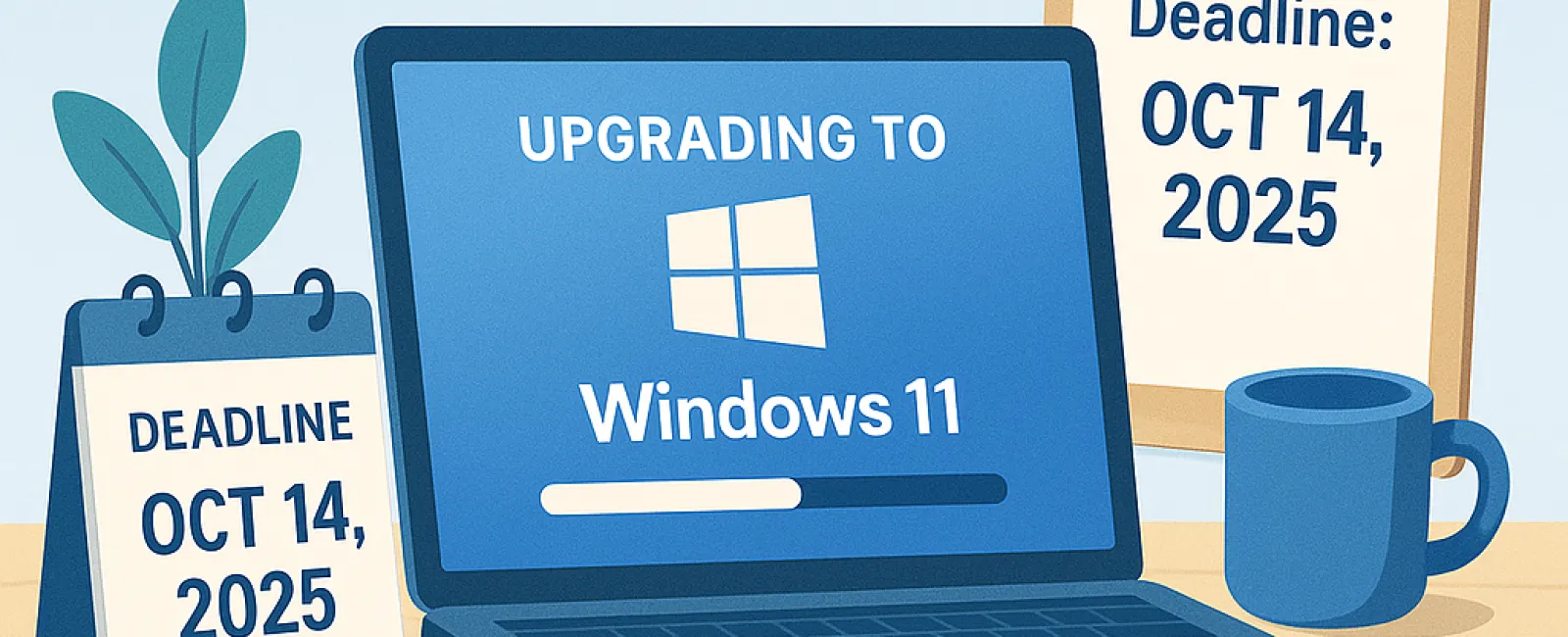June 23, 2025
If you're still running Windows 10 on your business machines, the time to act is now.
On October 14, 2025, Microsoft will officially end support for Windows 10. This means no more security updates, bug fixes, or technical assistance.
What business owners need to realize is that the cost of waiting goes beyond just eventually needing to upgrade.
It's about the risks and expenses you face while delaying.
"We'll Deal With It Later" Is An Expensive Strategy
Upgrading every machine in your business may not be a welcome budget item, and it's tempting to postpone it until something breaks.
But procrastination comes with real costs:
1. You're Operating Without A Safety Net
Once Microsoft stops updating Windows 10, any new security vulnerabilities become your problem. Hackers target outdated systems because they're easier to exploit. It's like locking the front door but leaving the windows open. A single breach could cost thousands or even jeopardize your entire business.
2. Software And Hardware Compatibility Issues
Many business applications, including accounting software, CRMs, and industry-specific tools, are already dropping support for Windows 10. Imagine your systems failing mid-project or crashing during a client presentation—what would that cost you? It's not just software; new printers, peripherals, and security tools may also stop working properly with an outdated OS.
3. Lost Productivity
Old systems are slower, crash more often, and frustrate your team. Even small delays add up, reducing efficiency, lowering morale, and hurting your competitive edge. If each employee loses 10 to 15 minutes daily to tech problems, consider the cumulative cost over a month.
4. Emergency Upgrades Are Always More Expensive
Waiting until a system fails or your team can't work doesn't just cause stress—it leads to costly emergency spending like rush hardware orders, premium IT labor fees, and downtime during replacements. Planning ahead saves money and hassle.
5. You're Risking Compliance Violations
If your business handles sensitive data or is regulated (HIPAA, PCI-DSS, etc.), using unsupported systems could lead to fines or legal trouble. Many regulations require current security measures, and Windows 10 will no longer meet those standards after October 2025.
What Smart Business Owners Are Doing Now
They're preparing ahead by not only upgrading devices but also using this opportunity to:
- Audit which devices need replacement
- Streamline tools and software
- Strengthen cybersecurity
- Plan IT budgets wisely for 2025
How To Make The Transition Smooth
We recommend the following steps:
- Run a compatibility check to identify which machines can upgrade to Windows 11 and which need replacement
- Audit your applications to ensure they work on Windows 11 or newer systems
- Budget for new hardware now to avoid supply chain delays
- Partner with an IT provider who can manage the transition seamlessly, minimizing downtime and surprises
Don't Wait Until October To Panic
Delaying until the last minute will cost you more in money, stress, and lost opportunities. We're helping small businesses upgrade smartly—with a planned, smooth process designed for future growth.
Click
here or give us a call at 332-217-0601 to Speak to an Expert and we'll help you identify what
needs upgrading, what can stay and how to build a transition plan that won't
disrupt your business before the deadline.



